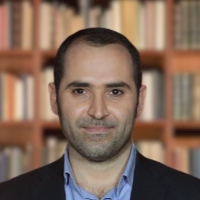Analyzing the density indicators in urban areas for controlling sprawl (Case study: District 2 of Tehran)
Today’s urban sprawl is a more challenging issue because urban physical development planning is a basic necessity of urban development plans. This phenomenon is caused by different factors that interact, and one of the strategies of management, control, and decreasing adverse effects is identifying these influencing factors in the emergence of urban sprawl. Therefore, recognizing the effective factors in the formation and expansion of cities can be helpful in the suitable selection decisions for their future. As the country's capital in the past years, Tehran experienced physical growth. Because sprawl benefits and encroachment around land caused some crudity in the city's physical growth, understanding this city's mechanisms of physical expansion is the critical goal of this research.
This research is a descriptive analytic one. In this regard, summative data of smart growth include average floor, compression ratio, residential average occupancy level, residential net density (persons per hectare), average residential area (square meters), residential land area (thousand square meters), gross population density (persons per hectare) have been analyzed. Also, the number of residential plots in 14 neighborhoods of district 2 of Tehran municipality using ELECTRE and ENTROPY has been assessed.
The research showed the ranking of 14 neighborhoods in the 2nd district of Tehran from the view of density indicators based on the Elector model. So that the first to fourth neighborhoods, located in the northern part of the region, with a number of 10 to 12 predominance, have a better situation in terms of density indicators.
The increase in density in the 2nd district of Tehran has been associated with negative consequences instead of positive results, regardless of the network structures of roads, accesses, and development of public transportation. Although policies to increase density have been taken in recent years, the lack of establishment of appropriate structures, especially in user distribution areas and the transportation system's defects, have caused severe disturbances. So, in this situation, the intensive growth of the city can be called a weak and incomplete approach.
-
Analysis of the Drivers Influencing the Revitalization of Urban Historical Fabric with a Futures Studies Approach (Case Study: The City of Kashan)
Mohammad Moulai Qalichi *, Amir Hoseinianrad
Journal of Urban Studies on Space and Place, -
Pathology of the Housing Planning Process in the Housing Policy System: the case study of City Qaen
*, Mohsen Rezaei Arefi, Seyedeh Elham Davari, Marzieh Amini
Journal of Geography and spatial development, -
Analysis and Evaluation the Relationship between Gender Stereotypes and Empowerment of women in Poor Urban Areas(Case Study: Informal Settlements in Ilam)
*, Freydoun Babaei Agdam, Shahrivar Rostaei, Akbar Asghari Zamani
Journal of Geography and Planning, -
Analysis and evaluation of economic factors affecting the empowerment of women in urban suburbs(Case Study: Ilam City Informal Settlements)
*, Freydoun Babaei Agdam, Shahrivar Roostaei, Akbar Asghari Zamani
Human Geography Research Quarterly,



